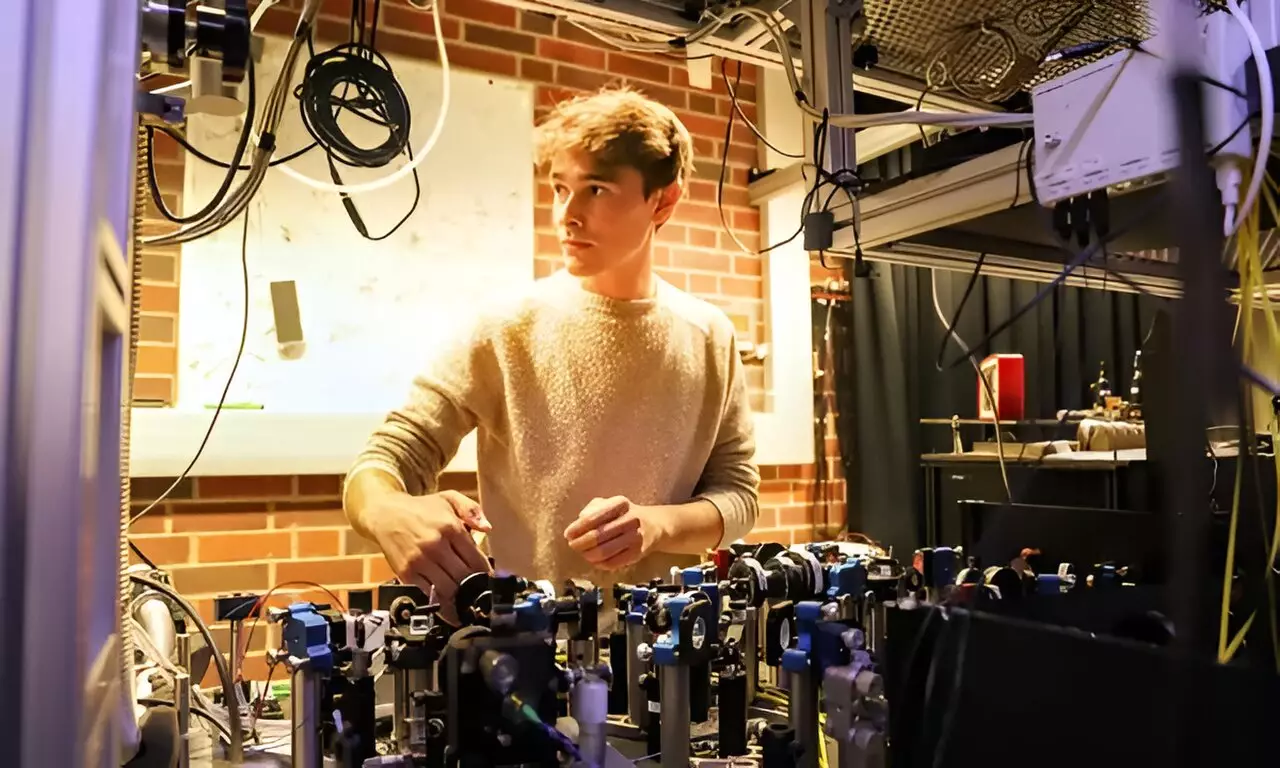In the rapidly evolving field of quantum mechanics, researchers are continually seeking to unravel the complexities surrounding entanglement and interference, particularly in systems comprising more than two particles. A notable study led by Robert Keil and Tommaso Faleo from the Department of Experimental Physics has shed light on these intricate relationships. Collaborating with esteemed institutions such as the University of Freiburg in Germany and Heriot-Watt University in the U.K., the team seeks a deeper comprehension of how quantum systems behave when entangled states are involved. Their research paves the way for new insights into multi-particle interactions and their implications for quantum technologies.
At the heart of this investigation is the examination of how interference patterns arise when photons are entangled. In a candid interview, Tommaso Faleo elaborates on the team’s objectives. The research aims not only to clarify the relationship between interference and entanglement but also to graphically illustrate how quantum states influence interference dynamics. The complexity multiplies as more particles become involved, drawing comparisons to classical physics while elevating the discussion into the realm of quantum phenomena that often defy traditional logic.
Quantum entanglement, initially a perplexing dilemma for early quantum physicists, remains a cornerstone of modern quantum mechanics. When particles become entangled, their properties are entwined regardless of distance, rendering them unsuitable for independent analysis. This peculiarity of quantum behavior signifies a departure from classical views where entities are treated as discrete units.
In classical physics, interference arises from the superposition of waves—either constructively enhancing or destructively canceling effects depending on the alignment of their amplitudes. This mirrors the quantum system where probability amplitudes contribute to the occurrence of distinct outcomes. The foundational work by Hong, Ou, and Mandel in 1987 highlighted two-particle interference, revealing the significance of indistinguishable particles in shaping interference patterns. This phenomenon has since become integral to various optical quantum technologies.
However, as Keil and Faleo’s research indicates, when extending the exploration to multi-photon interference, the outcome is characterized by a level of complexity that surpasses the initial two-particle framework. The team observes that interference patterns emanate not merely from the individual quantum states of photons but also from the interrelations fostered through entanglement. This interconnectedness influences how particles behave, transforming the spatial dynamics within separate interferometers.
The findings from this body of research introduce a novel type of collective interference that highlights the interplay between entanglement and intricate multi-particle dynamics. Here, Faleo and his colleagues emphasize that the interference patterns are contingent on the overall quantum state of all particles involved. When certain particles are excluded from the analysis, crucial aspects of the interference become obscure, thus revealing the necessity of considering the entirety of the system rather than isolated components.
This study not only enhances theoretical understanding but also sets the stage for practical advancements in quantum technologies. The capacity to manipulate and predict the behavior of quantum states has far-reaching applications in cryptography, quantum computing, and beyond. The insights gleaned from this research could lead to innovative strategies for harnessing entangled states to develop more efficient quantum systems.
The results obtained by Keil, Faleo, and their collaborators are more than just academic exercises; they symbolize a landmark contribution to the discourse on multi-body quantum systems. By unpacking the layers of complexity associated with entanglement and interference, their work cultivates a fertile ground for future studies to build upon. Quantum mechanics, once a theory cloaked in mystery, continues to unveil its secrets, promising a new era of technological breakthroughs that could redefine our understanding of the physical world.
This investigation serves as a stepping stone for future explorations into the multi-faceted behaviors of quantum systems, encouraging researchers to delve deeper into the relationships between entangled particles and their interference effects. In doing so, it emphasizes the importance of collaborative research efforts in advancing quantum science, where interdisciplinary approaches can catalyze advancements that are otherwise unattainable in isolated frameworks.

